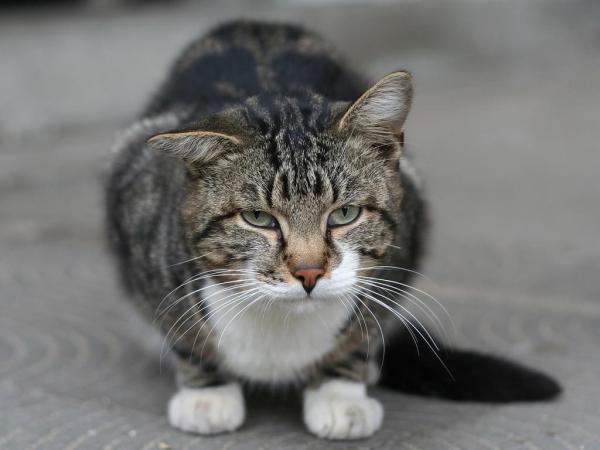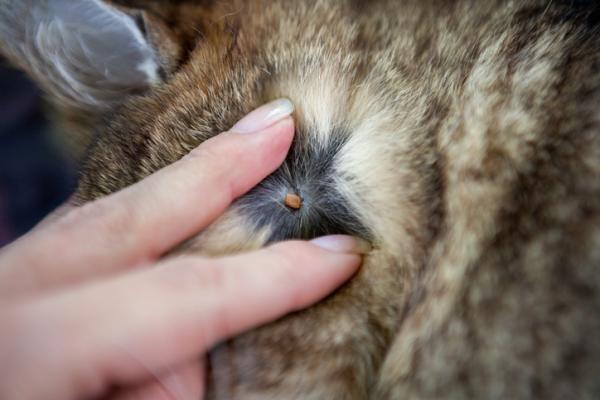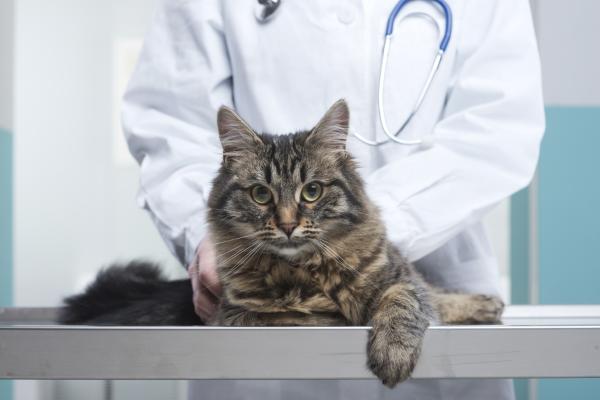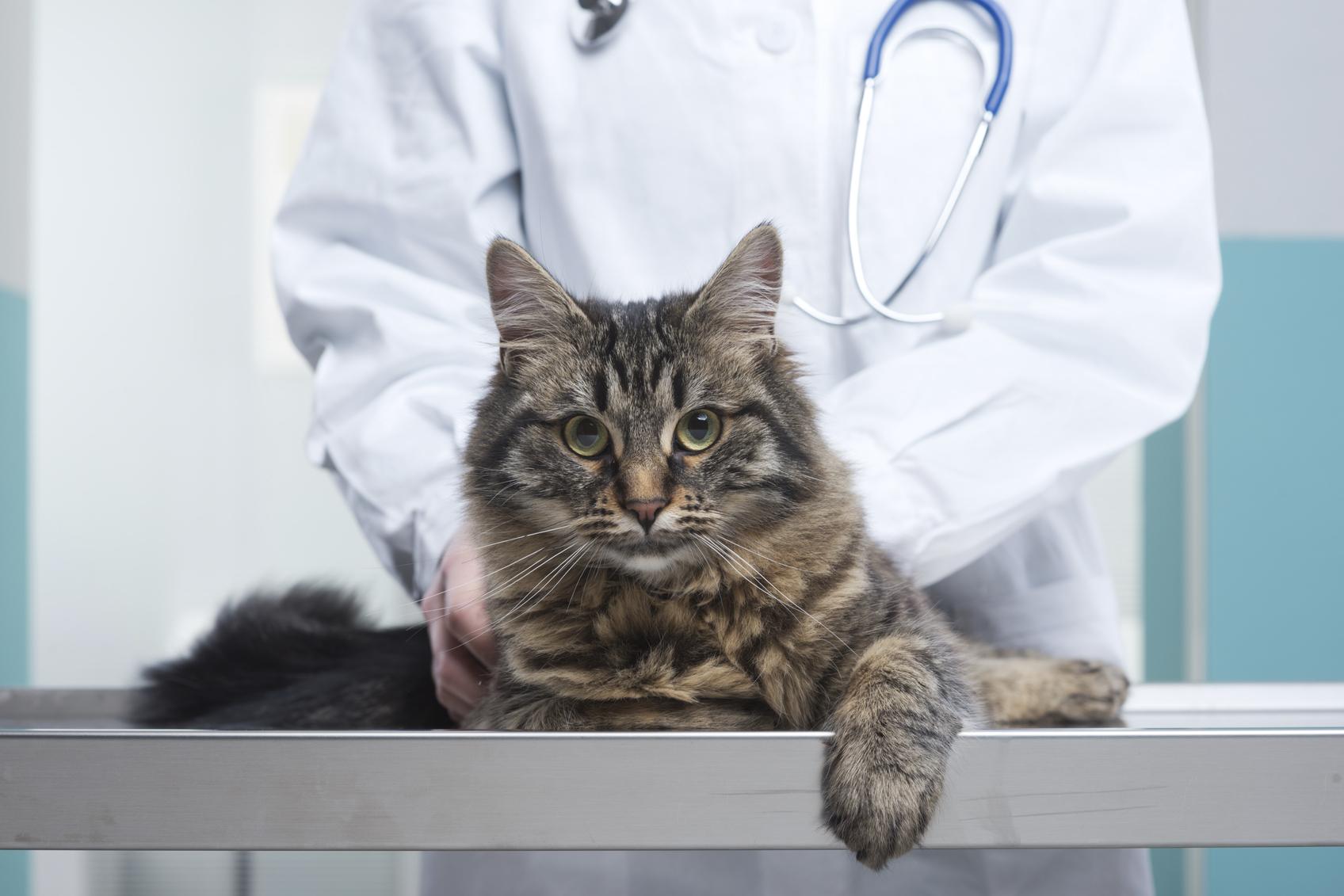Feline Infectious Anemia – Symptoms and Treatment



See files for Cats
Usually the precursor to feline infectious anemia (FIA), feline mycoplasma are parasitic cells which often go unnoticed in the individuals which carry them. They are bacteria which go under the classification Mycoplasma haemofelis and, despite their hidden nature, can manifest in severe anemia symptoms in cats. While treatment options are available, if the anemia is acute enough infection can prove fatal.
In this AnimalWised article, we take a look at feline mycoplasma leading to feline infectious anemia. We’ll discover its most common symptoms, how it is transmitted and how it might be treated.
Mycoplasma in cats
Mycoplasm haemofelis is the bacterium which is the most common pathogen causing feline infectious anemia. Along with feline immunodeficiency virus (FIV and also known as feline AIDs) and feline leukemia virus (FeLV), it makes up the three main infectious blood diseases in cats.
The most common transmission of the disease is through infected ectoparasites. These are parasites including fleas, ticks and mosquitoes which pass the infection via their bites. One of the reasons a proper deworming schedule is so important is to prevent such infections.
However, there are other ways this disease can be passed on. Transfusion of contaminated blood is one. Mothers passing it on to their offspring is also believed to be a mode of transmission, but the understanding is currently limited. It is possible it is passed on during gestation, but it could also occur from nursing after birth.

Causes of feline infectious anemia
Once the bacteria enter the bloodstream through the given vector, Mycoplasma haemofelis partly attaches itself to the surface of red blood cells causing hemolysis. This is the rupturing of red blood cells which leads to their destruction and resulting in the presence of anemia.
Studies suggest two distinct subspecies of feline mycoplasma have been identified. One is a smaller, less virulent form. The other is larger and relatively pathogenic, leading to sever anemia.
It is important to note that not every cat which is exposed to this bacteria will contract FIA. There are many which will become infected, yet will remain asymptomatic, meaning they don’t show any symptoms. These animals, however, are carriers and can transmit it to other animals which may develop symptoms.
This pathology can also lie dormant and only manifest itself when the cat’s immunity is compromised. This might be if they have the aforementioned FeLV or FIV. However, it can also occur during periods of stress, injury or even a relatively mild disease such as having a cold.
Transmission of feline mycoplasma
Mycoplasma can be transmitted by contact through saliva. However, interactions that involve aggression between two cats can cause transmission through scratches or biting. The disease can pass through cuts and wounds which are infected by the other animal.
Any cat can suffer the disease regardless of age, breed or sex. However, unneutered tomcats may be more likely to get it thanks to their proclivity for fighting. The spring/summer seasons are also a time when infection is more likely due to the greater number of vectors in the form of fleas and ticks.

Symptoms of Mycoplasma Haemofelis infection in cats
While some cats will show obvious signs, others do not. It will depend on the pathogenicity of the agent (i.e. the ability of the agent to cause the disease), the amount of the pathogen transmitted and the health of the infected individual.
If the infected cat is not asymptomatic, as can happen with mild anemia, obvious clinical signs can appear. Such symptoms may include:
- Anemia
- Depression
- Weakness
- Enlargement of the spleen
- Anorexia
- Weight loss
- Dehydration
- White mucus
- Yellow mucus
- Fever
Diagnosis of feline infectious anemia
If the cat is a carrier of Mycoplasma Haemofelis, it is unlikely the cat will be taken to the vet for a diagnosis unless symptoms appear. If feline infectious anemia develops, the vet will need to run a few diagnostic tests. This is partly due to the infection sharing symptoms with other pathologies. These tests will likely be:
- Blood smears
- Polymerase chain reaction (PCR)
However, the molecular PCR diagnostic method is not available in every country or region. Blood smears are also not always conclusive, which makes the presence of mycoplasma often difficult to recognize. Similarly, patients which show positive results by PCR might be carriers of the disease, but not actively express it. In these cases, treatment is not usually necessary until symptoms appear.
The vet might also suggest a complete blood count test (CBC). The purpose of this is to detail the general condition of the animal and help to provide a definitive diagnosis.
The differential diagnosis of this pathology is usually very complicated. A thorough evaluation of the animal needs to be enacted, taking care to note their clinical history, accompanying symptoms, various analytical factors and physical examinations. Additionally, we should endeavor to give the vet any information about possible parasitical infections.

Treatment of feline infectious anemia
In general, the treatment of FIA involves the administration of antibiotics, corticosteroids, fluid therapy and, in some cases, a blood transfusion. The treatment will always need to be administered to by a veterinarian. They will be able to assess the needs of the patient, the patient’s clinical history and the results of the tests.
An appropriate personalized treatment, as well as supportive care, are essential to ensure the success of the treatment and the quality of life of our feline. Likewise, an early diagnosis will improve the chances of successful treatment.
Does feline infectious anemia have a cure?
Feline infectious anemia does have a cure. Additionally, a recovered animal will no longer present symptoms of the disease. However, cats which have managed to overcome this condition through treatment will become aysmptomatic carriers. This could be either for a few months or until the death of the animal.
Prevention of feline mycoplasmosis
The main measure of protection against mycoplasmosis is to avoid contact with the ectoparasites which act as vectors of the disease. This is best done via deworming the cat. As spring and summer are the times of the year when transmission risk is greatest, this routine must continues throughout the year. We must also ensure the cat’s vaccination schedule is met fully tom prevent certain immunomediated diseases from activating the mycoplasma.
Neutering of the cat is also recommended. This is most effective is a surgical procedure which removes sexual organs and also benefits the cat in other ways. Aggression is generally reduced and other behaviors which reduce predisposition to parasitic infection.

This article is purely informative. AnimalWised does not have the authority to prescribe any veterinary treatment or create a diagnosis. We invite you to take your pet to the veterinarian if they are suffering from any condition or pain.
If you want to read similar articles to Feline Infectious Anemia – Symptoms and Treatment, we recommend you visit our Bacterial diseases category.









